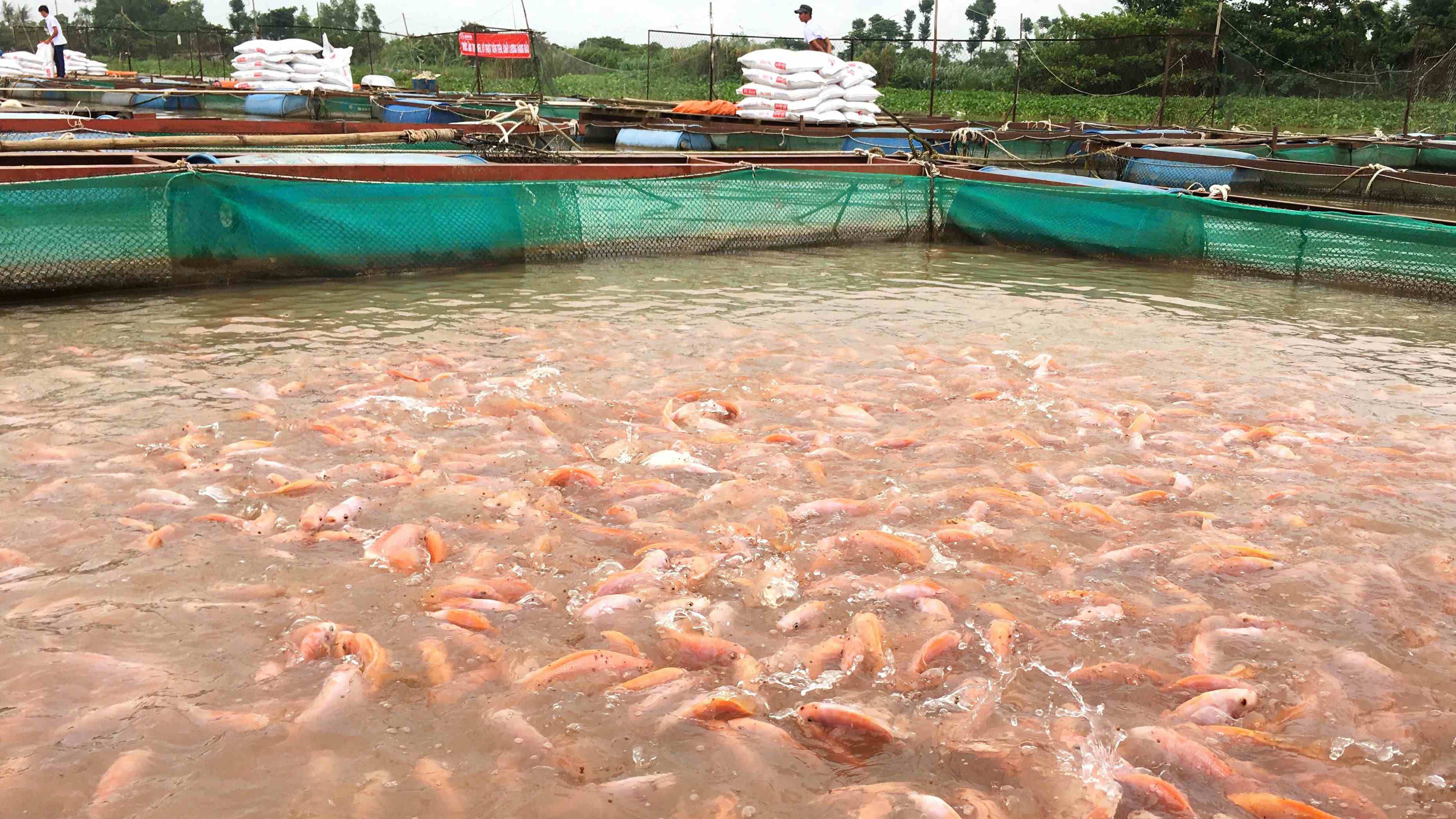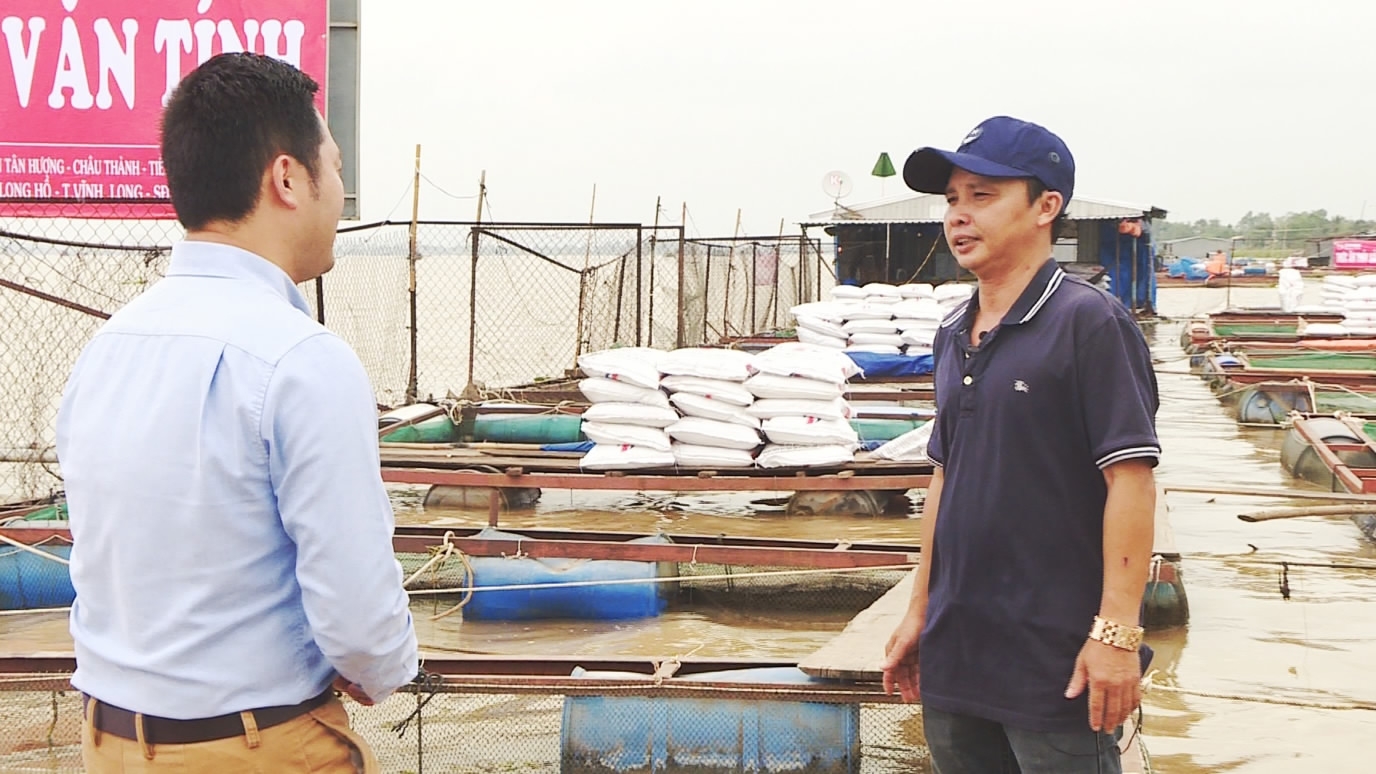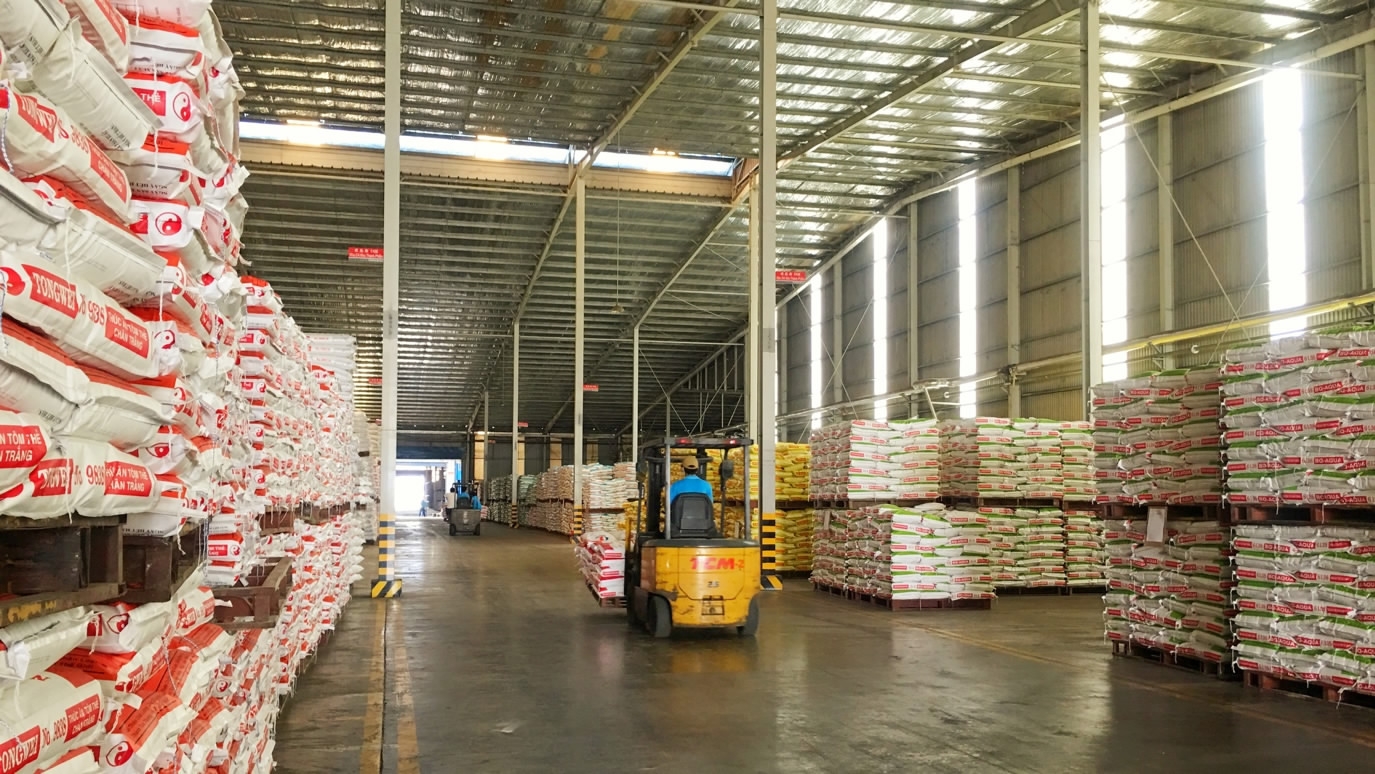
Business
15:53, 10-Nov-2017
From Vision to Action: Chinese feed helps boost fish farming in Vietnam
By CGTN’s Meng Qingsheng

Tien Giang Province, known as "The Rice Bowl" of Vietnam, is located in the northeast of the Mekong Delta and packed with floating houses and fish farms.
Red tilapia, a type of fresh-water fish, is a major source of income for fish farmers in Tien Giang.
Private businesses are expanding, as a result of a national development scheme for tilapia farming.

Floating houses and fish farms set up along the Mekong River in Tien Giang Province, Vietnam. CGTN Photo
Floating houses and fish farms set up along the Mekong River in Tien Giang Province, Vietnam. CGTN Photo
Ho Van Tinh, who runs the biggest red tilapia farm in Tien Giang, has been feeding his fish with floating pellets produced by the Chinese company Tongwei Vietnam in the past five years.
Ho told CGTN that with Tongwei's fish feed, he can raise three batches of fish a year as opposed to just two when using other feeds. That means saving an extra 1,000 dong for each kilogram, or 200 million dong a year (around 9,000 US dollars).

Ho Van Tinh (right) talks with CGTN’s reporter. CGTN Photo
Ho Van Tinh (right) talks with CGTN’s reporter. CGTN Photo
As market demand rises, local people turn from wild fishing to cage farming, which has gone through an expansion of 50 percent in recent five years, leading to a surging need for high quality fish feed.
Tongwei Vietnam, the subsidiary of China’s Tongwei Group, was founded in 2007 and now dominates the aquatic feed market in Vietnam with 60 percent market share.
Chen Pingfu, the company’s general manager, told CGTN that the company offers high quality, environment-friendly products with reasonable price.

Tongwei Vietnam's warehouse. CGTN Photo
Tongwei Vietnam's warehouse. CGTN Photo
In addition to fish feed, the company also offers more assistance service to increase fish production, including water quality monitoring.
Chen Pingfu told CGTN that Tongwei Vietnam plans to expand the business in the coming three years, and add two more plants to the existing five across the country.

SITEMAP
Copyright © 2018 CGTN. Beijing ICP prepared NO.16065310-3
Copyright © 2018 CGTN. Beijing ICP prepared NO.16065310-3